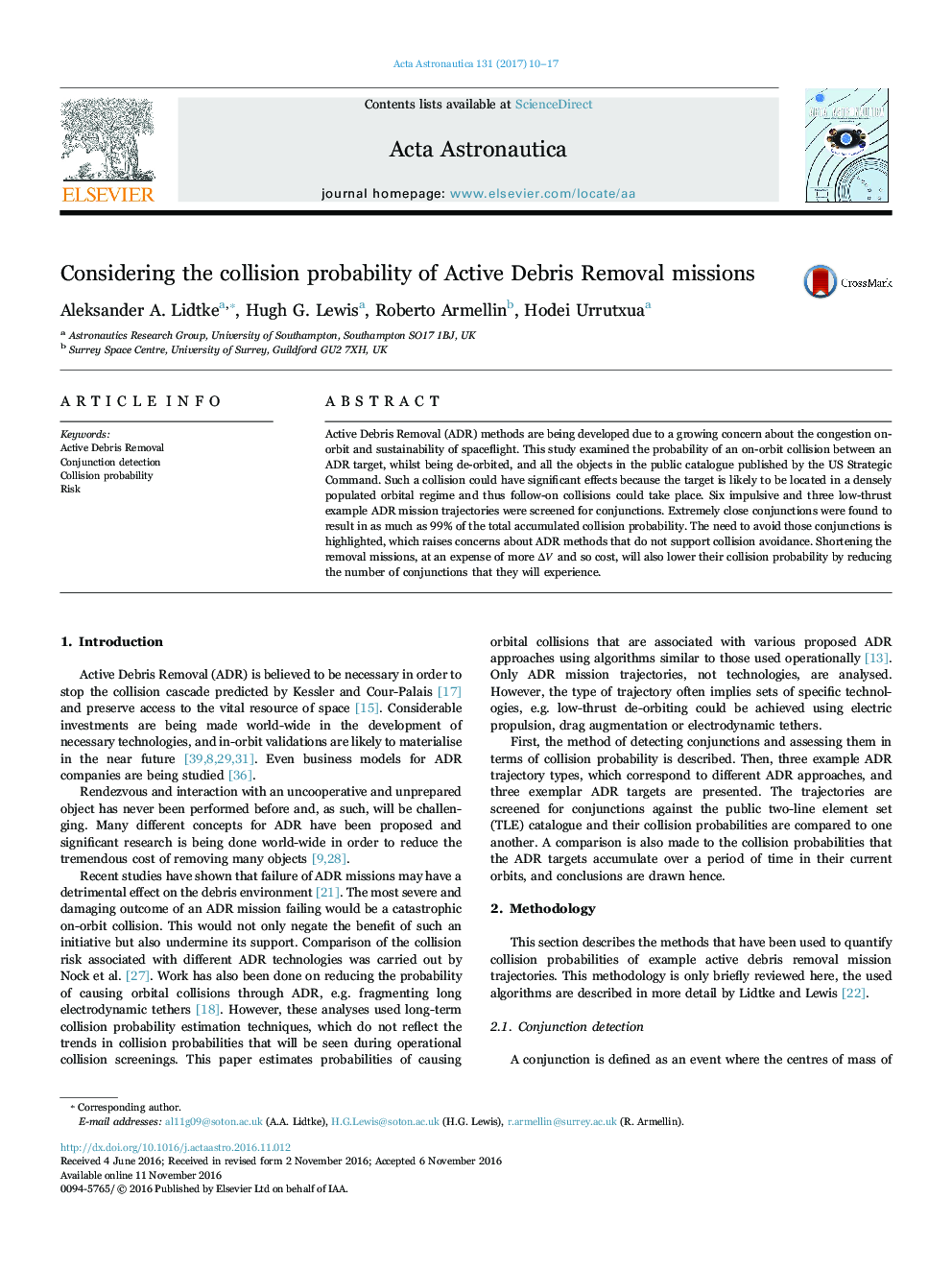| Article ID | Journal | Published Year | Pages | File Type |
|---|---|---|---|---|
| 5472192 | Acta Astronautica | 2017 | 8 Pages |
Abstract
Active Debris Removal (ADR) methods are being developed due to a growing concern about the congestion on-orbit and sustainability of spaceflight. This study examined the probability of an on-orbit collision between an ADR target, whilst being de-orbited, and all the objects in the public catalogue published by the US Strategic Command. Such a collision could have significant effects because the target is likely to be located in a densely populated orbital regime and thus follow-on collisions could take place. Six impulsive and three low-thrust example ADR mission trajectories were screened for conjunctions. Extremely close conjunctions were found to result in as much as 99% of the total accumulated collision probability. The need to avoid those conjunctions is highlighted, which raises concerns about ADR methods that do not support collision avoidance. Shortening the removal missions, at an expense of more ÎV and so cost, will also lower their collision probability by reducing the number of conjunctions that they will experience.
Related Topics
Physical Sciences and Engineering
Engineering
Aerospace Engineering
Authors
Aleksander A. Lidtke, Hugh G. Lewis, Roberto Armellin, Hodei Urrutxua,
